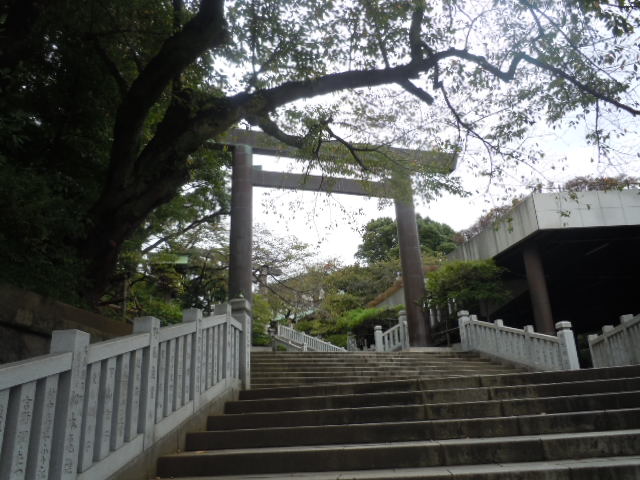
Entrance to Iseyama Kotai Jingu
Iseyama Kotai Jingu is Yokohama’s main shrine. I expected it to be an ancient affair, but found instead it was a nineteenth-century construction and one that typified the politics of early Meiji times. For someone who enjoys history, like myself, it’s of particular interest.
The shrine was originally located elsewhere, but not much is known about it. In 1869 the Meiji government ordered its relocation to the present site. Why? It all had to do with the foreign settlement and that infectious “disease” – Christianity.
With the opening of the port of Yokohama in 1859, the foreign settlement there had started to grow and Christian priests were allowed to minister to them according to the treaties forced on the Japanese by the Foreign Powers. Ever since 1614, when Christianity had been banned, the Japanese had regarded the European religion as an evil ideology that sought to seduce and colonise them.
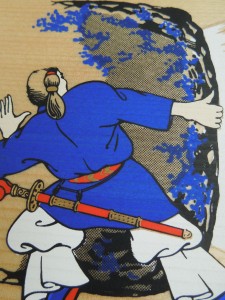
The shrine's ema features the opening of Amaterasu's door in the Rock Cave myth
To counteract the frightening power of Christianity, the Meiji government promoted an emperor-centred Shinto as its official religion. Accordingly Iseyama Kotai Jingu was set up on a hill overlooking the foreign settlement as a kind of defensive bulwark. And what did the new ideologues choose as the kami for the shrine? None other than Amaterasu, ancestor of the emperor and mightiest amongst the country’s kami. It was a political move, as the shrine’s own literature readily admits… [quote follows]
“In order to unify and stabilize the country, protect the nation from foreign influences and preserve national traditions and identities, prevent the spread of Christianity from the port area and encourage emperor-worship, it was necessary to build a state shrine in Yokohama.”
(‘necessary’ is an interesting choice of words!)
In 1871 a ceremony transferring the divided spirit (bunrei) of Amaterasu Omikami from Ise Jingu took place. The first chief priest had been head of Yokohama village, and his family became hereditary holders of the post thereafter. Odd, isn’t it, that the hereditary principle should have been introduced even as Japan was set on Westernising!
The shrine was completely destroyed in the Great Kanto Earthquake of 1923, but rebuilt in 1928. It has an open style and, judging by my visit, it’s a popular place for hatsumiyamairi (first shrine visit to bless a baby). It also specialises in weddings, with a large wedding reception hall next door.
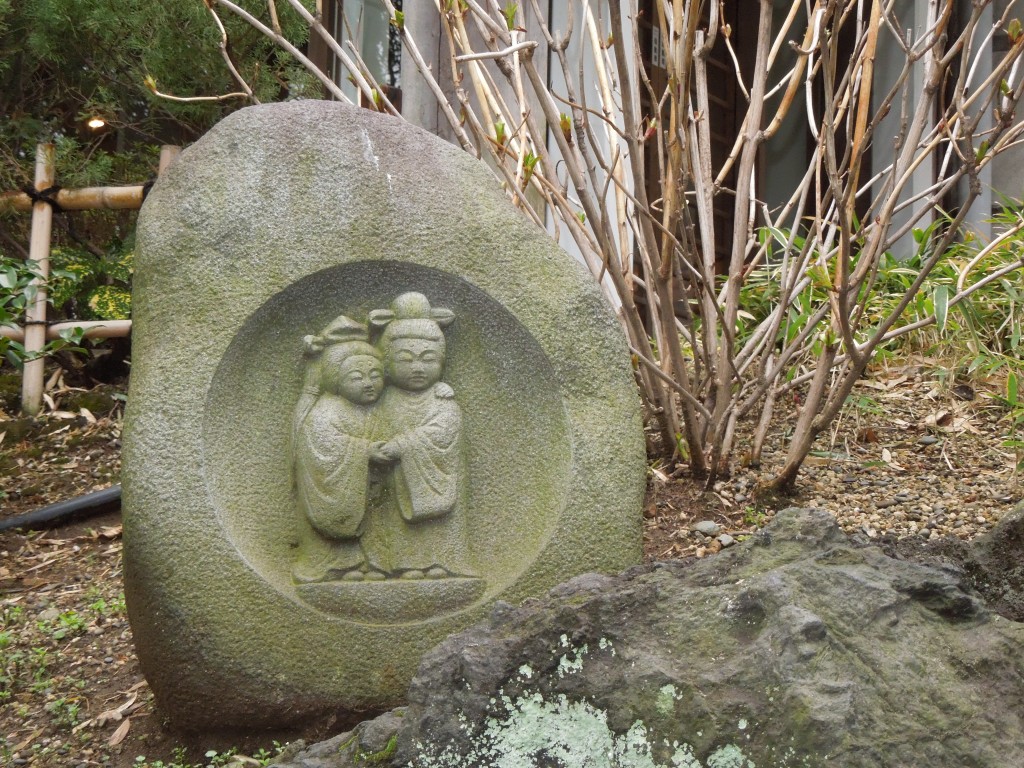
Modern-style dosojin (boundary markers), showing a happy couple and placed at the border of the shrine grounds and wedding hall
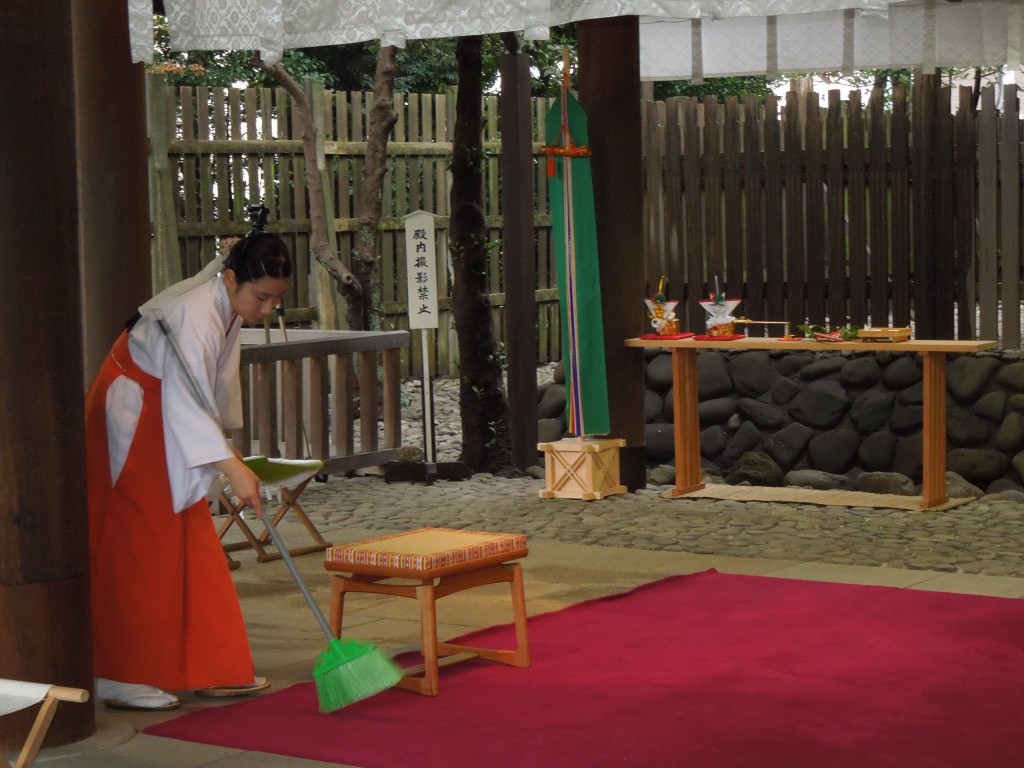
Miko clears up after a ceremony in the roofless area before the honden. Simplicity and closeness to nature are here mixed with political origins.

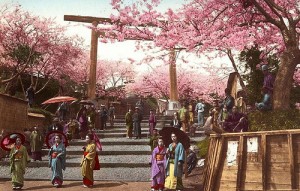
Leave a Reply